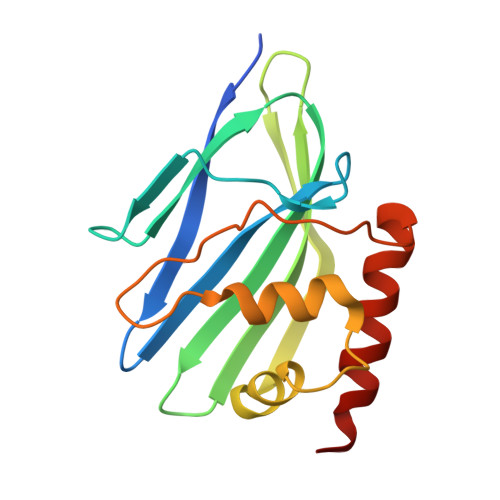Computational design of a protein-based enzyme inhibitor.
Procko, E., Hedman, R., Hamilton, K., Seetharaman, J., Fleishman, S.J., Su, M., Aramini, J., Kornhaber, G., Hunt, J.F., Tong, L., Montelione, G.T., Baker, D.(2013) J Mol Biol 425: 3563-3575
- PubMed: 23827138
- DOI: https://doi.org/10.1016/j.jmb.2013.06.035
- Primary Citation of Related Structures:
3VB8 - PubMed Abstract:
While there has been considerable progress in designing protein-protein interactions, the design of proteins that bind polar surfaces is an unmet challenge. We describe the computational design of a protein that binds the acidic active site of hen egg lysozyme and inhibits the enzyme. The design process starts with two polar amino acids that fit deep into the enzyme active site, identifies a protein scaffold that supports these residues and is complementary in shape to the lysozyme active-site region, and finally optimizes the surrounding contact surface for high-affinity binding. Following affinity maturation, a protein designed using this method bound lysozyme with low nanomolar affinity, and a combination of NMR studies, crystallography, and knockout mutagenesis confirmed the designed binding surface and orientation. Saturation mutagenesis with selection and deep sequencing demonstrated that specific designed interactions extending well beyond the centrally grafted polar residues are critical for high-affinity binding.
Organizational Affiliation:
Department of Biochemistry and Howard Hughes Medical Institute, University of Washington, Seattle, WA 98195, USA. procko@u.washington.edu















